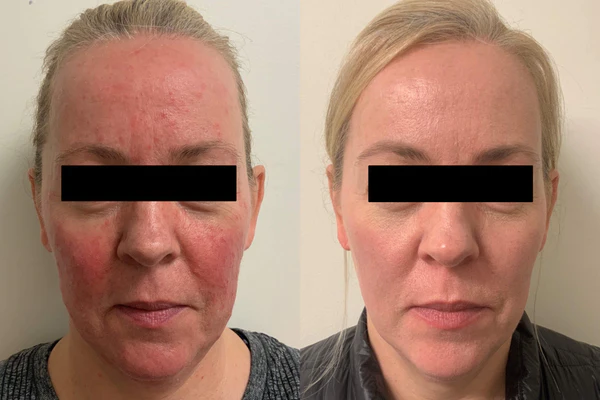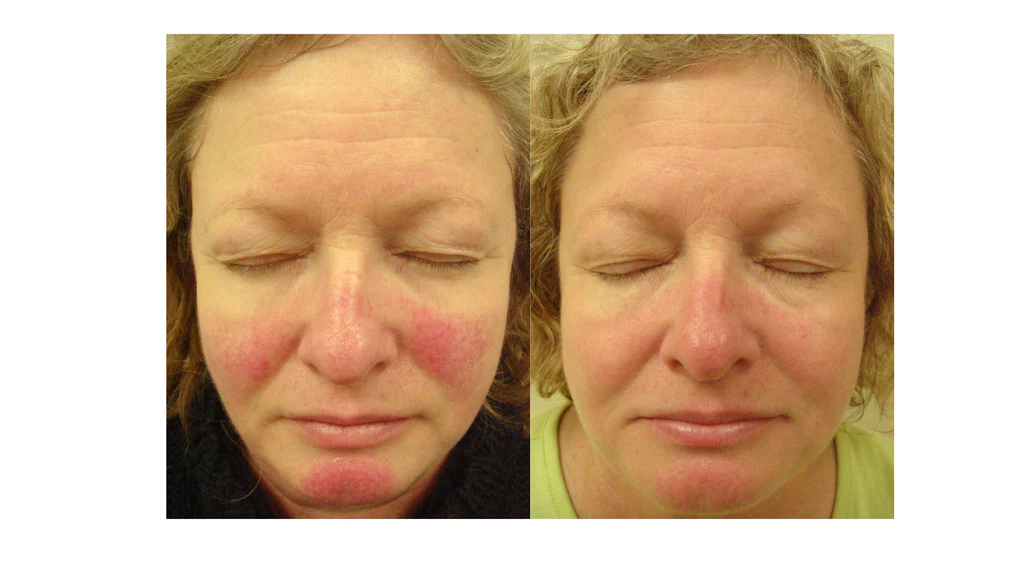Do You Have Rosacea? Here’s How You Can Tell
If you’ve noticed an increase in redness, breakouts and flushing, and you’re no longer in your teens, you may have a rosacea. As the name implies, rosacea is a condition that can leave the skin looking red and inflamed. There are often pimples and pustules that often make it confused with acne but there are difference in both the types of lesions and in how we treat them. While acne is currently considered to be triggered by bacteria, the exact underlying cause of rosacea is unknown but is driven by inflammation.
One theory is that mites in the skin, called demodex, are the culprits and this makes sense since many of the treatments that work well for rosacea are anti-parasitic. Others believe that the mites are a red-herring and that there is another driver of inflammation that makes it possible for the mites to overgrow. The good news is that either way, we have treatments that work.
But first, to make the diagnosis, here’s what to look for:
- Breakouts, usually in the central face and around the mouth. These may be pimples and pustules, but not blackheads or whiteheads
- Redness and easy flushing when embarrassed, mad, hot, after exercise (more than your usual and lasting longer than usual), or after a hot shower or sauna
- Broken blood vessels on the cheeks, chin and around the nose
- Frequent chelazions (styes) around the eyes
- A gritty feeling in the eyes (see a doctor right away if you have this)
- Fullness of the nose or a bulbous nose (think WC Fields)

Any of these could be a sign of rosacea and a reason to see your dermatologist for evaluation and guidance. As for what brings it on, there are a few commonalities we can point to:
- Extremes in temperature: this may be one reason why we see flares of rosacea as the seasons change, or after sauna, vigorous exercise or even from drinking a hot beverage
- Alcohol: Studies have shown that white wine makes it worse, others show that red wine is the main trigger. The answer is that it’s often personal where some are more susceptible to one form of alcohol over another but in the end it may have more to do with volume than type of alcohol consumed. Chronic alcohol intake is also one of the driviers of rhinophyma
- Foods and Spices: it can be anything from pepper to vinegar to a preservative in the food you’re eating, or a vegetable like eggplant or tomato, or chocolate. I call these personal triggers because not everyone has the same triggers. If you notice a flare, think back to what you consumed the day before and look for patterns. My personal trigger is vinegar. I’m careful to avoid it and my skin looks better because of it.

If after reading all this you’ve determined that you may have rosacea, here’s what you can do about it:
- See your dermatologist, that’s the best way to know for sure and to get the best personalized treatment guidance.
- Avoid products with high concentrations of glycolic, salicylic or retinoic acid.
- Use sunscreen of SPF 30 or higher daily (ok, I say this to everyone, but it’s especially true if you have rosacea to help limit redness in the skin)
- Look for products with azelaic acid
- The All Day Masque helps with breakouts on the lower face and around the mouth that are common in rosacea and worse after wearing a mask
- Look for products with sulfa I love the Detoxifying Mask
- Niacinamide is another great ingredient for rosacea prone skin
- Dew Drop Ultra is excellent for hydration and restoring the skin barrier
- Antioxidants and peptides help reduce inflammation and redness
- Intense Pulsed Light Device: This is an in-office treatment that is usually done in a series and will help reduce redness and also as a bonus, will firm the skin
- Pulsed Dye laser: another in-office treatment using a specific laser to knock out persistent broken blood vessels
- Chemical peels: There are specific, gentle, anti-redness and skin rejuvenating peels designed specifically for rosacea prone skin.

Bottom line:
Rosacea is a common skin condition that usually starts after the teenage years, sometimes not until your 30’s or 40’s and consists of breakouts that look like pimples but don’t respond well to acne treatments, broken blood vessels and redness and can also involve the nose and eyes. Treatments include avoiding triggers, using soothing products and ingredients and in-office treatments to knock out the inflammation and improve skin quality.

Leave A Comment